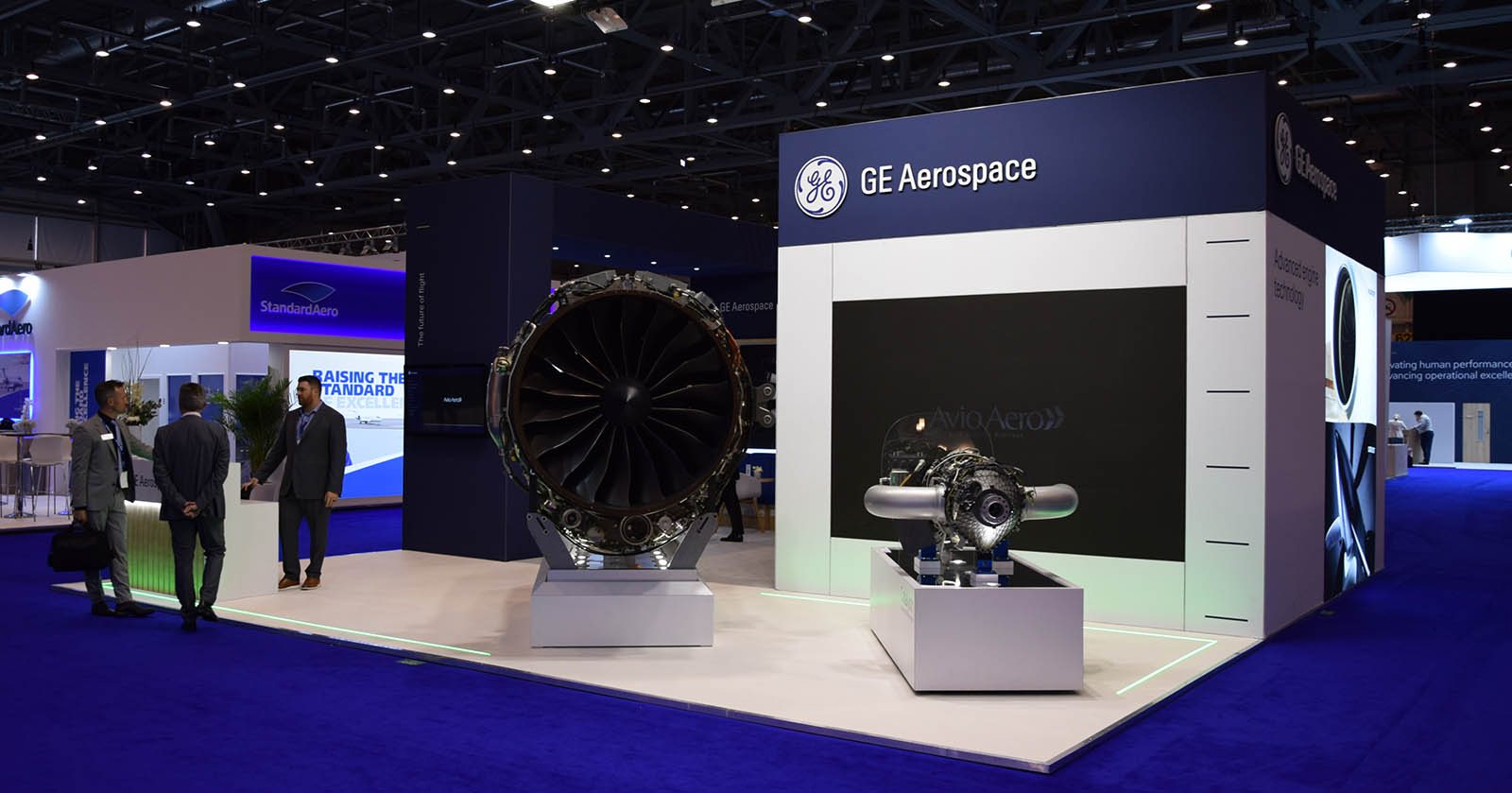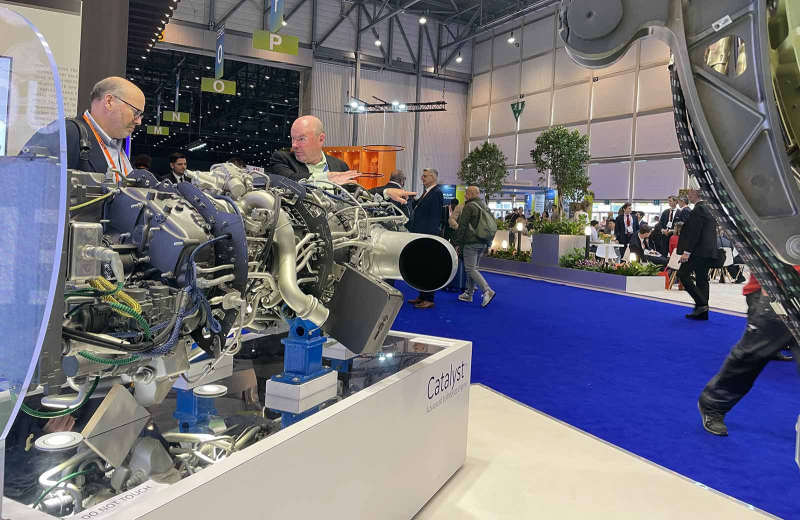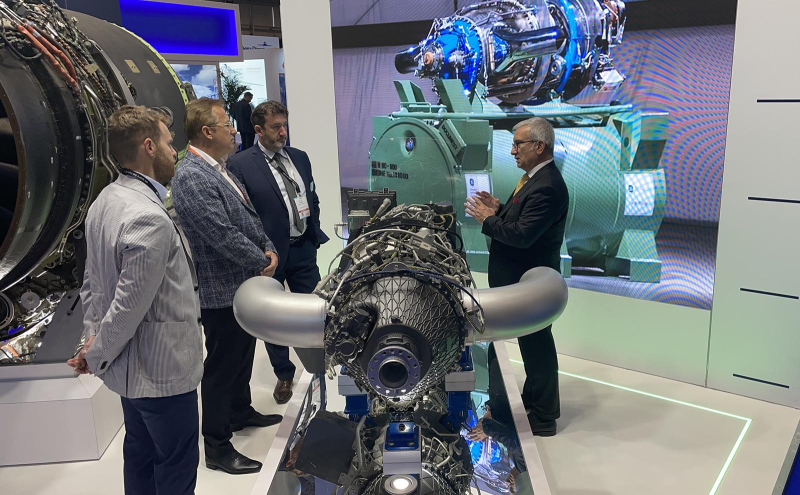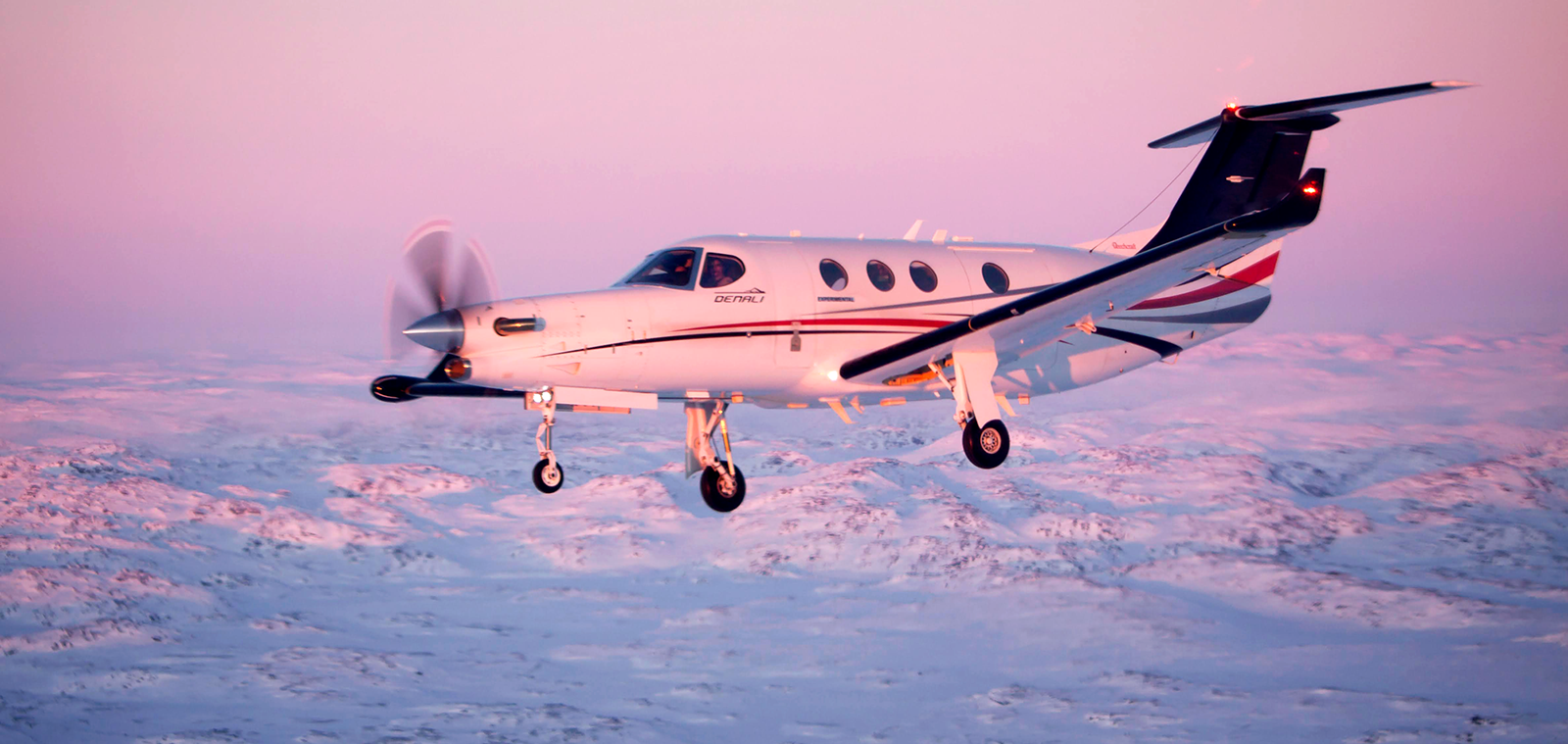Aviation
The endeavor of inventing
During the last airshow in Switzerland, the Catalyst engine drew the attention of a large part of the public once again, while the testing campaign is progressing with remarkable performance.
May 2023
The most important private and business aviation event in Europe, EBACE 2023, was staged in the lovely city of Geneva to gather the world's main players in the industry with their new developments and flagship products, like every year, within the last days of May.
Avio Aero was on hand in the parent company GE Aerospace's booth with its turboprop engines. The H-Series family was displayed on screens and a large videowall, while the "game changer” - the new Catalyst engine - was displayed live, in the form of a real scale mockup.
A few steps away, yet in the hall of the Palaexpo that traditionally hosts EBACE, stood the wonderful booth of Textron Aviation, with aircraft and helicopters of legendary brands - such as Cessna, Beechcraft and Bell, whose latest models were on display in the static exhibition at the adjacent airport. In the booth, a touchscreen the size of a drawing board digitally presented the full range, where the Denali stood out: the civil version of the Catalyst will be exclusively launched by this all-new single propeller aircraft.
The Beechcraft Denali is proceeding straight in its flight test campaign carried out on three prototype aircraft that have so far totaled about 700 flights and accumulated more than 1,300 hours in the air. A few days earlier, Textron Aviation had announced the new Garmin self-landing system which consolidates the level of technology and safety, and also sets a new record for this aircraft that is feeding the enthusiasm of experts, pilots and operators.
On that same occasion, its Chief Test Pilot, Dustin Smisor, confirmed expectations about flight progress and provided exciting performance reviews: “we’re very pleased with all the work put into designing this engine. It’s been extremely solid and reliable. We have been super pleased with the reliability of this engine. Seeing this fuel efficiency, I’ve had to re-gauge myself because it doesn’t burn a lot of fuel”.
According to Smisor, the Catalyst and Denali form the perfect match. “We as test pilots go well above and beyond what normal pilots go through. This includes testing in-flight shutdowns, rapid accelerations and decelerations of power, as well as extreme conditions”. Smisor added, mentioning flights made in the skies over the scorching deserts of Arizona or, conversely, through the glacial Canadian air above Iqaluit.
These words found support from Paul Corkery, Catalyst Program Leader at Avio Aero, who on the same occasion mentioned how much the content of technological innovation and firsts encapsulated in the new engine - along with contingencies of the past three years, including health and war crises, especially in the European region where all development and production takes place – affected the tireless work of the teams of professionals and engineers deployed in Italy, the Czech Republic, Poland and Germany.
"So far we have assembled 26 engines, achieved more than 5,500 hours of operation, counting ground and flight tests, and 3,400 hours together with the McCauley propeller"
"We are at about 72 percent with engine certification testing. So far we have assembled 26 of them, achieved more than 5,500 hours of operation - counting ground and flight tests - and 3,400 hours together with the McCauley propeller to which it is digitally integrated and that was designed from scratch just like the aircraft and engine." Corkery said, sharing updated forecasts of the process, which is targeted for completion in 2024, as a result of the commitment of all European Avio Aero and GE Aerospace teams to the same goal.
Within this framework, the feat is to complete the most rigorous process ever faced by a turboprop engine and its single components, with several new requirements. And the feat also includes the serial production ramp-up during years marked by major shocks running through the global supply chains and logistics.
Experts and engineers at work in the European Avio Aero and GE Aerospace sites, as well as on the flight campaign field at the test center in Wichita (at Textron Aviation’s headquarters), know this well. Among those in Prague, Jiri Pecinka has spent the last few years with mind and heart on this engine. He was at the airport in Berlin when it lifted off for the first time, as well as during its first ignition on the threshold of 2018 in Prague.
"My most intense memory is still related to FETT(the first ever ignition, ed.)," said Pecinka, Test System Engineering Section Manager. "If you will, a simple test for experts: just start the engine and get it to idle. But that was the first time in decades that a powertrain featured never-before-seen innovations, designed and built from scratch. Today it is now routine for us, so even the various tests we carry out - including new and complex, like ice crystal icing tests (for ice formation at high altitudes, ed.) or the more delicate ones where you test it by simulating borderline, very critical situations - must ensure both operability and safety."
Pecinka and his colleague Validimir Ostrovsky are in Prague, home to a large group of engine’s modules designers and engineers who are part of a much larger team that sits across Turin, Brindisi, Bielsko Biala, Warsaw, and Munich and numbers up to 300 engineers. When they talk about their work, they act as if their colleagues from these cities were in the next room.
"Collaboration between all sites takes place through lines of communication and tools typical of our standard work, an integral part of the lean culture in GE, and covers the preparation and execution of tests. Daily meetings in every location, in every team in every business function, report from individual instrumentation or planning needs to the most complex problems to be solved," said Ostrovsky.
"Most of it is done remotely with the different European locations, and this has made our transition between pre-Covid and post-Covid ways of working a little easier. And the more informal, rapid line of communication is equally crucial. It is now more common to see in person, which facilitates problem solving, shortens time, and especially helps new, perhaps younger, team members with alignment, learning. Relationships are stronger and more engaging, and this makes you feel like one team at the expense of distance," Pecinka said.
It is a team effort that produces effects on those experienced pilots overseas who know what it means to make aircraft and engines from a blank sheet of paper, as Smisor testifies. “We have made incredible progress. It’s extremely simple to operate this aircraft. When you step inside the cabin and cockpit, it gives you a jet-like experience. It’s a lot of fun to fly, a workhorse, and a great cross-country airplane.”
Beechcraft Denali's cover image is courtesy of Textron Aviation.








